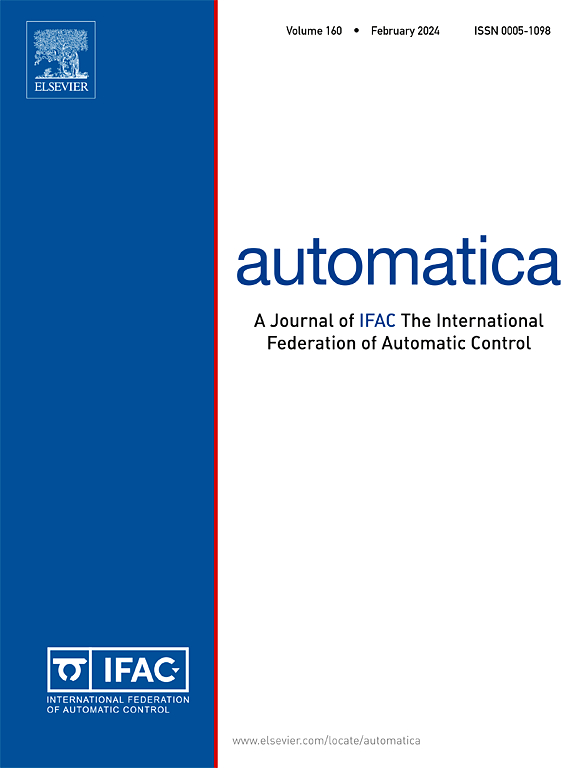Maximum principle for partial information non-zero sum stochastic differential games with mixed delays
IF 5.9
2区 计算机科学
Q1 AUTOMATION & CONTROL SYSTEMS
引用次数: 0
Abstract
This paper is concerned with one kind of partial information non-zero sum stochastic differential game with mixed delays. Both the state and control processes contain delays, where the former contains moving-average delay, discrete delay and noisy memory. We establish a necessary as well as two sufficient stochastic maximum principles for the game. As one of the main features of this research, a new kind of sufficient maximum principle is given, where the diffusion term can be controlled with non-convex control domains, and no second-order adjoint equation is needed. The theoretical results are applied to study two examples where the adjoint processes can be derived by two approaches and then the equilibrium points are obtained. This research generalizes those of stochastic optimal control problems.
混合时滞的部分信息非零和随机微分对策的极大原理
研究一类具有混合时滞的部分信息非零和随机微分对策。状态过程和控制过程都包含延迟,其中状态过程包含移动平均延迟、离散延迟和噪声存储器。我们为游戏建立了一个必要的和两个充分的随机最大值原则。作为本研究的主要特点之一,给出了一种新的充分极大值原理,其中扩散项可以用非凸控制域控制,不需要二阶伴随方程。将理论结果应用于两种方法均可导出伴随过程的两个实例,从而求得平衡点。这一研究推广了随机最优控制问题。
本文章由计算机程序翻译,如有差异,请以英文原文为准。
求助全文
约1分钟内获得全文
求助全文
来源期刊

Automatica
工程技术-工程:电子与电气
CiteScore
10.70
自引率
7.80%
发文量
617
审稿时长
5 months
期刊介绍:
Automatica is a leading archival publication in the field of systems and control. The field encompasses today a broad set of areas and topics, and is thriving not only within itself but also in terms of its impact on other fields, such as communications, computers, biology, energy and economics. Since its inception in 1963, Automatica has kept abreast with the evolution of the field over the years, and has emerged as a leading publication driving the trends in the field.
After being founded in 1963, Automatica became a journal of the International Federation of Automatic Control (IFAC) in 1969. It features a characteristic blend of theoretical and applied papers of archival, lasting value, reporting cutting edge research results by authors across the globe. It features articles in distinct categories, including regular, brief and survey papers, technical communiqués, correspondence items, as well as reviews on published books of interest to the readership. It occasionally publishes special issues on emerging new topics or established mature topics of interest to a broad audience.
Automatica solicits original high-quality contributions in all the categories listed above, and in all areas of systems and control interpreted in a broad sense and evolving constantly. They may be submitted directly to a subject editor or to the Editor-in-Chief if not sure about the subject area. Editorial procedures in place assure careful, fair, and prompt handling of all submitted articles. Accepted papers appear in the journal in the shortest time feasible given production time constraints.
 求助内容:
求助内容: 应助结果提醒方式:
应助结果提醒方式:


